- Home
- TV History
- Network Studios History
- Cameras
- Archives
- Viewseum
- About / Comments
Skip to content
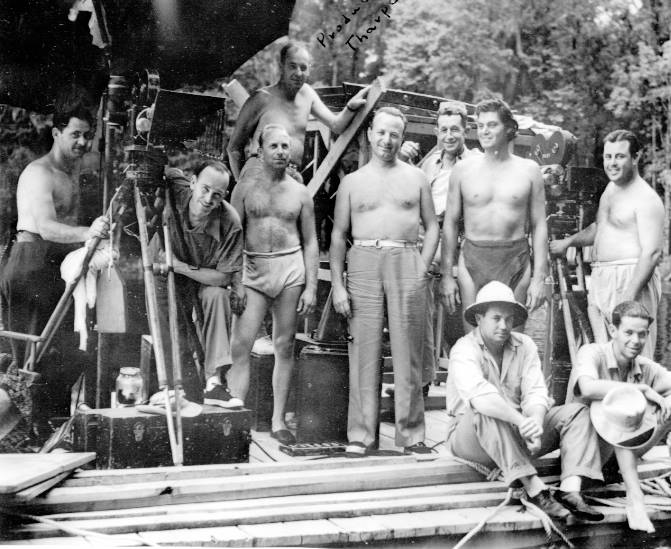



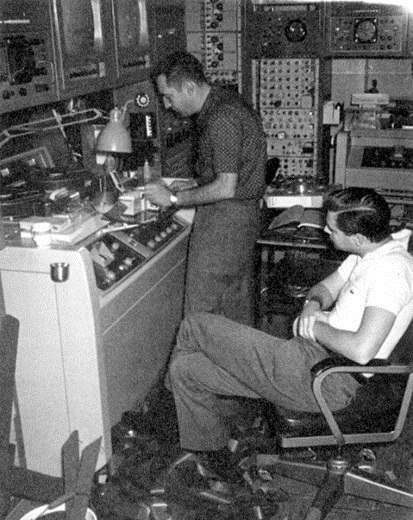













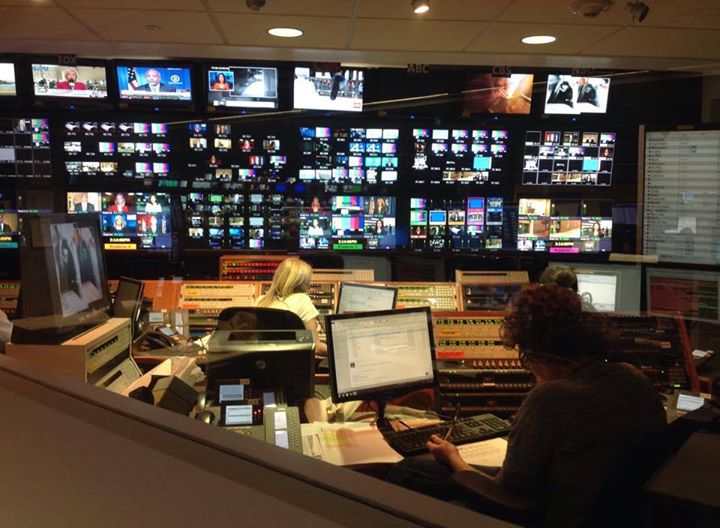

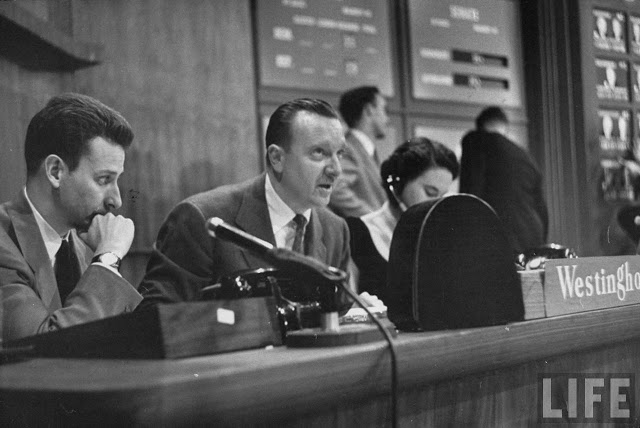









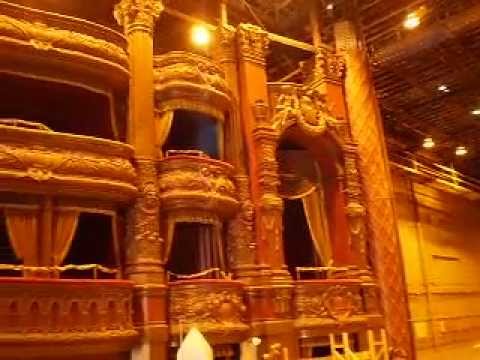

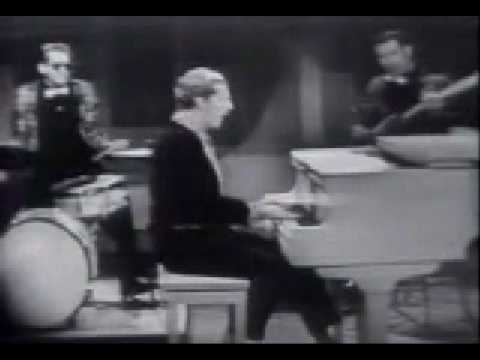

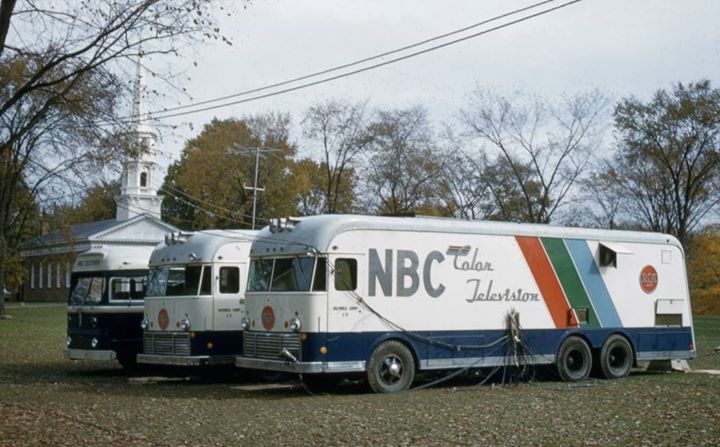



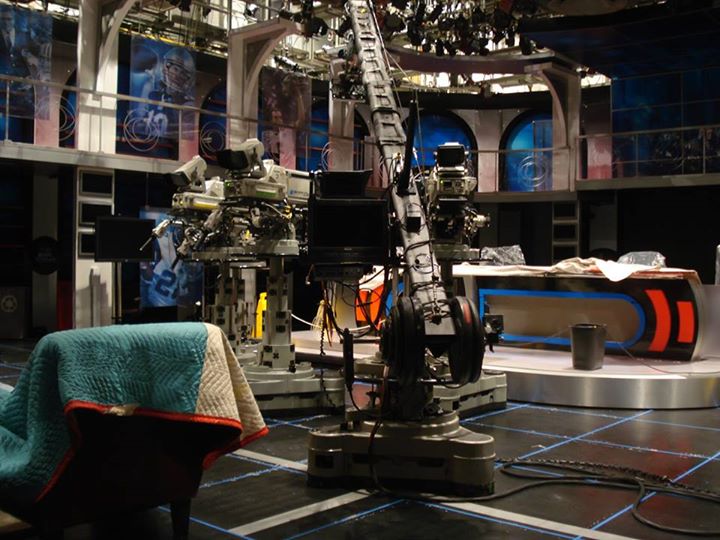

Posts in Category: TV History
Page 50 of 136
« Previous
1
2
3
4
5
6
7
8
9
10
11
12
13
14
15
16
17
18
19
20
21
22
23
24
25
26
27
28
29
30
31
32
33
34
35
36
37
38
39
40
41
42
43
44
45
46
47
48
49
50
51
52
53
54
55
56
57
58
59
60
61
62
63
64
65
66
67
68
69
70
71
72
73
74
75
76
77
78
79
80
81
82
83
84
85
86
87
88
89
90
91
92
93
94
95
96
97
98
99
100
101
102
103
104
105
106
107
108
109
110
111
112
113
114
115
116
117
118
119
120
121
122
123
124
125
126
127
128
129
130
131
132
133
134
135
136
Next » Remember MGM’s Great Tarzan Movies?
On November 6, 2014
- TV History
Just For Fun…Remember MGM’s Great Tarzan Movies?
Here’s a rare shot of Johnny Weissmuller with his MGM crew on location in Florida at Silver Springs. That’s where they went when they needed great underwater footage. Otherwise, most of the six Tarzan films for MGM were shot around the Lake Sherwood area near Los Angeles. Other exterior shots included Sherwood Forest, where aerialist Alfredo Codona doubled for Weissmuller swinging through the trees.
The tree-house was first seen in ‘Tarzan Escapes’, and was built at Crater Camp, in what is now the Malibu Creek State Park, and duplicated on a stage at MGM. The interiors were on another sound stage.
Weismueller went on to make six more Tarzan movies for RKO which were noticeably lacking in production value as most of the filming was done on the famous “back 40 lot”. Enjoy and share! -Bobby Ellerbee
The Paper Roll Teleprompters…A Funny Story
On November 6, 2014
- TV History
The Paper Roll Teleprompters…A Funny Story
I would love to hear your funny teleprompter stories, and I know there are a lot, but here’s the best one I’ve heard and it happened in Atlanta at WSB TV.
Back in the 50s and early 60s, a lot of local spot were still done live and stations had to keep talent and techs on studio duty, and they had to be ready to go on time. A veteran director at WSB, Roger Marx, told me that one of the announcers he worked with was really bad about walking into the studio just seconds before air with no run through. He asked him time and again to be early for at least one pass, but no amount of pleading worked, so….
One afternoon, it was a minute till air and this announcer was not on the set but, as usual, strolled in with only ten seconds till air. When the cue came, the prompter rolled the copy and Mr. Tardy was at a loss for words. To teach him a lesson, they had loaded the paper roll upside down. He was never late again! Enjoy and share! -Bobby Ellerbee
The First Known Videotape Edited Show…November 20, 1958, CBS
On November 6, 2014
- Archives, TV History
Seated on the right is director John Frankenheimer watching Ross Murray edit “Old Man”, which was a ‘Playhouse 90’ presentation that aired November 20, 1958.
This was the first time an entire production had ever been videotaped in advance and edited for air. The year before, Frankenheimer had used videotaped inserts in the live productions of two prior ‘Playhouse 90’ shows which were “Bomber’s Moon” and “The Days Of Wine And Roses”, but “Old Man” was a different ballgame.
Most of “Old Man” took place in a storm on the Mississippi River as an escaped convict fled from the law. The production used two studios at Television City (wet and dry) and was so daunting technically that the only way to do it was on tape. You can see some of the production shots below, including the huge Chapman movie crane they brought in.
On November 30, 1956 CBS had made history by tape delaying ‘Douglas Edwards With The News’ and again on October 13, 1957 when they used videotape to play back ‘The Edsel Show’ which aired live from Television City three hours earlier. Enjoy and share! -Bobby Ellerbee
A Great True Story From NBC Veteran Frank Gaeta…NBC 1951 – 1988
On November 6, 2014
- TV History
A Great True Story From NBC Veteran Frank Gaeta…NBC 1951 – 1988
Earlier this week, I had the pleasure of speaking with Mr. Gaeta about his 37 years at NBC. In this photo from NBC Brooklyn Studio II, Frank (plaid shirt) is operating the TK41 at the bottom of the picture. This is on the set of ‘Sing Along With Mitch’ in 1962.
He was there for the remarkable early days of color and spent a lot of time at The Colonial Theater and Brooklyn which were NBC’s first two color facilites. In ’75 he moved from cameraman to technical director and was TD for ‘Another World’ till he retired in ’88 and on occasion, also directed.
Here’s a story like none I have ever heard before. One night in the early 60s, he was on one of four color cameras for a live color prime time network show from NBC Brooklyn. They had rehearsed for three long days, and it’s a good thing they did.
About thirty seconds into the show, the intercom line to the control room went dead. None of the studio crew could hear the TD and he couldn’t hear them, but the cameramen could hear each other. So, as the show went on, all of them were talking to each other, feeding each other shots. It sounded something like this…”Frank, you’ve got shot 72 and hold it till Jack can get in place for 73 and then truck left for 74.”
There’s no business like PRO business, and that’s how these guys pulled it off without a hitch. If you have a story like this, we would all love to hear it so please tell us about it! Enjoy and share! -Bobby Ellerbee
From Flip Cards To The Credit Roll…
On November 5, 2014
- TV History
From Flip Cards To The Credit Roll…
As we end today’s discussion on early graphics techniques, here are some shots that cover a lot of territory…from 1948 into 1993. The big picture is from NBC’s 1948 ‘Television Scene Magazine’ and shows the flip card board. The second photo is from the 50s of a black drum style credit roll with a Marconi Mark I or II. The color photo from James Shea is from a 1993 episode of ‘The Price Is Right’ from CBS Television City. This is one of the last times this was used and shortly after, they went along with everyone else and changed over to CG. They kept it in use long after other shows went CG because the producers liked the more organic look. Enjoy and share! -Bobby Ellerbee
Manual Graphics…1952 Election Coverage At ABC
On November 5, 2014
- TV History
Manual Graphics…1952 Election Coverage At ABC
This is a far cry from where we are now, but this is the way it was done back when television was just taking baby steps. The ABC stagehand in the large photo is one of several men behind the big totals board. Each plastic ring has 0 through 9 on it and with the latest vote tabulations called out to them, these men moved the numbers on the board. On this night, Walter Winchell was the network’s television and radio anchor. These photos are more than likely from ABC Studio TV 1. Enjoy and share! -Bobby Ellerbee


1950s Demo Reel…Local Market Weather Package
On November 5, 2014
- TV History, Viewseum
1950s Demo Reel…Local Market Weather Package
These twenty second forecast pieces were usually not in lieu of a local weather report inside a regular newscast, but were used during the day as sponsored “public interest” spots with a ten second sponsorship slide and VO at the top of each one.
Telecine rooms were always busy back in those early days. It was all manually done with film, slides and live VOs and very “by the book” as the book had all the break and run times, slide and film numbers and live VO scripts. Stations that used this package would have had all these on separate mini reels with leader at the front and back end and woe be unto you if the box and reel numbers got mismatched. Enjoy and share! -Bobby Ellerbee
Analogue Graphics Display…The 1964 Version
On November 5, 2014
- TV History
Analogue Graphics Display…The 1964 Version
With several stories on computer graphics and the like lately, I thought taking a look at how thing were done before all that came along would be fun and I’ll share a few with you this morning.
This is a WHDH Boston Celtics player info box complete with changeable photo cards and a small control box. Thanks to Maureen Carney for the photo. Enjoy and share! -Bobby Ellerbee

SMPTE Time Code – Virtually Unchanged After Almost 50 Years
On November 5, 2014
- TV History
New Richard Wirth Article…The SMPTE Time Code
This is a perfect detailed follow up to the Smith Block and video editing stories I posted here a few weeks back. Here’s the story of how the time code came to be and, having been around for almost half a century, how it has withstood the test of time.
Some of the most interesting parts of this are the rare videos he found while doing the research – like the CMX600 promotional film that gives a detailed demonstration of the first non linear editor in detail by taking you through the editing of a musical piece. Thanks to our friend Richard Wirth for composing this very interesting article. Enjoy and share! -Bobby Ellerbee
http://provideocoalition.com/pvcexclusive/story/timecode-virtually-unchanged-after-almost-50-years
SMPTE Time Code – Virtually Unchanged After Almost 50 Years
The more things change, the more they stay the same. So goes the old proverb. SMPTE Time Code is like that. While the entire production and post world around it has changed radically, time code has remained virtually the same.
Continuing Election Coverage At CNN…A Look Inside Event Control
On November 5, 2014
- TV History
Continuing Election Coverage At CNN…A Look Inside Event Control
Thanks to our friend Andy Rose, here is a look inside CNN Atlanta and one part of the network’s technical tasking for the still ongoing CNN election coverage. This photo does not show a traditional control room. It is the “event control” in Atlanta used during special coverage. It coordinates incoming live signals and routes them to the control room in manageable blocks. At last count, there were 96 remote signals expected over the course of the night (counting reporters, guests, and candidates’ events) which would overwhelm a traditional control room. These signals are transmitted through a combination of fiber optics, IP networks, broadband, bonded cellular, and literally every satellite frequency that CNN has available. Enjoy and share! To all the very tired folks at all the networks and local stations, THANKS! -Bobby Ellerbee


Election Night, 1952…The NBC, CBS And ABC Newsrooms In Action
On November 4, 2014
- TV History
Election Night, 1952…The NBC, CBS And ABC Newsrooms In Action
On this election day, here’s fun look back at the newsrooms of the big three in the 1952 election.
With so many people to accommodate, both on and off camera, it is possible that all three used adjoining or adjacent studios for coverage.
More than likely, the NBC coverage is coming from either Studio 3A or 3B or both. The CBS set is in Studio 41 at Grand Central and 42 is probably in use too with the wall opened up. ABC had a flexi walled studio too and their coverage is either in Studio TV 1 or TV 2, or both. Have you voted? Please do! Enjoy and share! -Bobby Ellerbee
The Bowery Boys: New York City History: Election Night, live on TV! New York City newsrooms, 1952
November 3, 1956…The ‘Oz’ Tradition Begins On CBS
On November 4, 2014
- TV History
November 3, 1956…The ‘Oz’ Tradition Begins On CBS
The first time ‘The Wizard Of Oz’ was shown on television was a Saturday night in November of 1956. Many have said that the debut broadcast was not in color, but this add from the Vineland Times Journal, in Vineland NJ settles that argument. It was indeed in color and this music store, which also sold color television sets, invited the public to watch at their store. By the way, RCA color sets sold for $495 and black and whites for $279 in 1956.
The year before, on March 7, 1955, NBC’s color broadcast of ‘Peter Pan’ from Brooklyn’s Studio I was a smash and CBS wanted a big color family affair too and broadcast ‘Oz’ as the last installment of the CBS anthology series ‘Ford Star Jubilee’.
It was a hit, but the annual tradition did not start till 1958 when CBS aired it a second time, but from then on, it was moved to an air date between Thanksgiving and Christmas. I’m glad to be able to say that I saw both the ‘Peter Pan’ and ‘Oz’ debuts, but only in glorious black and white. I think we got a color set in 1964. Do you remember? Thanks to David Crosthwait for the ad. Enjoy and share! -Bobby Ellerbee


Jay Leno Is Returning to ‘Tonight’ on Friday
On November 4, 2014
- TV History
This Should Be Interesting! Leno As “Tonight’ Guest This Friday
Jay Leno Is Returning to ‘Tonight’ on Friday
Jay Leno is returning to Tonight. The former host of the NBC late-night show will be back in its studio on Friday night for the first time since passing the baton to Jimmy Fallon. (Though he made a cameo in Fallon’s parody “House of Cue Cards” earlier this year, the upcoming episode will mark his fi…


The End…Universal Stage 28 Demolished, September 22, 2014
On November 4, 2014
- TV History
The End…Universal Stage 28 Demolished, September 22, 2014
The Joni Mitchell lyric, “they tore down paradise to put up a parking lot” comes to mind now. As I understand it, the space where Stage 28 was will now be used as part of the Universal Theme Park expansion. Although this was built in 1925, there are six older stages here…Stages 3 & 4 and 5 & 6 and 16 & 17 were built in 1916.
To end on a high note, click the link to see The Red Hot Chili Peppers, 1996 video that shows one of the few times the 1938 vintage under-the-floor water tank has been used. Gone but not forgotten! Enjoy and share! -Bobby Ellerbee


Remembering Universal Stage 28…A Must See History Link
On November 4, 2014
- TV History
Remembering Universal Stage 28…A Must See History Link
On September 19, a three day demolition job started and brought down one of the oldest movie sound stages in the world…by September 22, Stage 28 was gone. This is the best information I have seen on Stage 28 and at the bottom of this linked article is a stunning list of the many productions that were filmed here. I have one more post today on the demolition, but here are just a few of the movies and TV shows shot here.
‘Phantom Of The Opera’ 1925, ‘Uncle Tom’s Cabin’ 1927, ‘Dracula’ 1931, ‘Bride Of Frankenstein’ 1935, ‘Flash Gordon’ Serial 1936, ‘Psycho’ 1960, ‘Charade’ 1963, ‘The Birds’ 1963, ‘Thoroughly Modern Millie’ 1967, ‘Columbo’ TV Series, ‘The Sting’ 1973, ‘Jurassic Park’ 1993, and MANY MORE! The whole list is just amazing. Enjoy and share! -Bobby Ellerbee
http://www.thestudiotour.com/ush/frontlot/stage28.php
theStudioTour.com – Universal Studios Hollywood – Stage 28
Information and History about Stage 28 at Universal Studios Hollywood


Follow Up…Last Look At Universal Stage 28, The “Phantom Studio”
On November 4, 2014
- TV History
Follow Up…Last Look At Universal Stage 28, The “Phantom Studio”
Only a month ago, the sound stage where ‘Phantom Of The Opera’ was shot, was torn down. That was Universal Studio’s Stage 28. In this post, I am including two videos that give us a last look at the original 1925 set before it was carefully removed and packed away for display at a later date.
The embedded video is :49 seconds and was taken by a Universal employee on the sly. The second video is at this link and is a longer look with 2 minutes of photos of the set and some interesting history from the presenter who is the niece of the man who ran Universal and built Stage 28…Carl Laemmle.
In 1924 Universal’s president, Carl Laemmle, commissioned the construction of a set of the Paris Opera House for the movie. Because it would have to support hundreds of extras, the set became the first to be created with steel girders set in concrete. For this reason it was not dismantled until this year. Stage 28 still contained portions of the opera house set and was the world’s oldest surviving structure built specifically for a movie. The studio was used in hundreds of movies and TV series and I’ll give you the incredible list of what famous movies were shot here and many more photos in today’s next post. Enjoy and share! -Bobby Ellerbee
https://www.youtube.com/watch?v=HDDzG2G3ExM
As an employee, and thanks to a kind security guard, I was able to film this footage of the oldest sound stage in the world. Stage 28 at Universal Studios, H…


November 4, 1957…Dick Clark Debuts “Great Balls Of Fire”
On November 4, 2014
- TV History
November 4, 1957…Dick Clark Debuts “Great Balls Of Fire”
Just for fun, here’s a little piece of music and television history rolled into one. The song was recorded in Memphis at Sun Studios on October 8, 1957 and was the follow up to Jerry Lee’s first hit, “Whole Lotta Shakin”. This debut performance is on ‘The Dick Clark Saturday Beechnut Show’ on ABC from The Little Theater in New York. Notice the ultra quick “balls of fire” Lewis creates with magician’s flash paper while playing. -Bobby Ellerbee
https://www.youtube.com/watch?v=lidFipyLG8k
Jerry Lee Lewis Great balls of Fire Rock video


Best Photos Ever Of The Original NBC Color Mobile Units…
On November 3, 2014
- TV History
Best Photos Ever Of The Original NBC Color Mobile Units…
Thanks to Nicolas Auger, here is a great color photo of the first color mobile units ever. This picture was taken in Greenfield Village, Michigan near The Henry Ford Museum October 25, 1955 and NBC was there to shoot some of the museum’s activities for insert into ‘Today’ and ‘Home’, which is quite reminiscent of the 1954 Color Caravan tour.
The camera outside the school is shooting ‘Howdy Doody’ which was live from the Scottish Settlement School that day and was the third live colorcast from here. They were comparing 1855 to 1955.
The third vehicle is what I believe to be a black and white utility bus that came along with cable and scaffolding for this outdoor shoot of a recreated village from early American history. Images courtesy of The Henry Ford Museum Collection. Enjoy and share!
A Rare And Detailed Look At NBC’s Brooklyn Studios…Part 2 of 2
On November 3, 2014
- TV History
A Rare And Detailed Look At NBC’s Brooklyn Studios…Part 2 of 2
Today, we will take a look inside what was once the world’s biggest color television studios…that’s biggest in size and reputation.
Starting with the floor plan and sizes, Studio I was 163′ by 70′ with 24′ from the floor to the light grid. The floor area is 11,200 square feet and had an audience capacity of 420 in fold away bleachers.
Studio II, built from the ground up by NBC, was the smaller of the two, but had much more head room. It had 9,700 square feet of floor space and from floor to lighting grid was 39′. It was 131′ by 75′ and held an audience of 582 in fold away bleachers.
The famous swimming pool built for ‘The Ester Williams Aqua Spectacular’ which aired live November 29, 1956 is still there, under the floor of Studio I. Amazingly, there is a full basement under both studios and back in the day, was jam packed with scenery, props and equipment. I think the swimming pool was on the back wall, at the top of the Studio I floor plan. Studio II was used as the “dry” set with all the dance numbers and Studio I was the “wet” set.
I’ve included an October 1956 Broadcasting Magazine article that talks about the three color studios opening soon, which include Brooklyn II, The Ziegfeld Theater and Burbank’s Studio 4. Remember from yesterday’s post, Brooklyn I debuted September 12, 1954. I have put notes on all the attached photo to let you know what you are seeing, so please click on each individually. Thanks to Dennis Degan for saving these treasures from the now defunct JC Studios site. Enjoy and SHARE! -Bobby Ellerbee
To Sports Fans, This Set Should Look Familiar…CBS Studio 43
On November 3, 2014
- TV History
To Sports Fans, This Set Should Look Familiar…CBS Studio 43
On Saturdays and Sundays during football season, this is ground zero for the CBS Television Network’s sports coverage. I make that distinction because next door, in Studio 44 is the CBS Sports Network cable channel’s headquarters set. This set in use year round for all sports, but I seem to see it more in the fall.
I took this back in June at the CBS Broadcast Center in New York and just to be clear, this is the NY Studio 43 as there is a Studio 43 at Television City too. Edited and corrected now. Enjoy and share! -Bobby Ellerbee
Page 50 of 136
« Previous
1
2
3
4
5
6
7
8
9
10
11
12
13
14
15
16
17
18
19
20
21
22
23
24
25
26
27
28
29
30
31
32
33
34
35
36
37
38
39
40
41
42
43
44
45
46
47
48
49
50
51
52
53
54
55
56
57
58
59
60
61
62
63
64
65
66
67
68
69
70
71
72
73
74
75
76
77
78
79
80
81
82
83
84
85
86
87
88
89
90
91
92
93
94
95
96
97
98
99
100
101
102
103
104
105
106
107
108
109
110
111
112
113
114
115
116
117
118
119
120
121
122
123
124
125
126
127
128
129
130
131
132
133
134
135
136
Next »